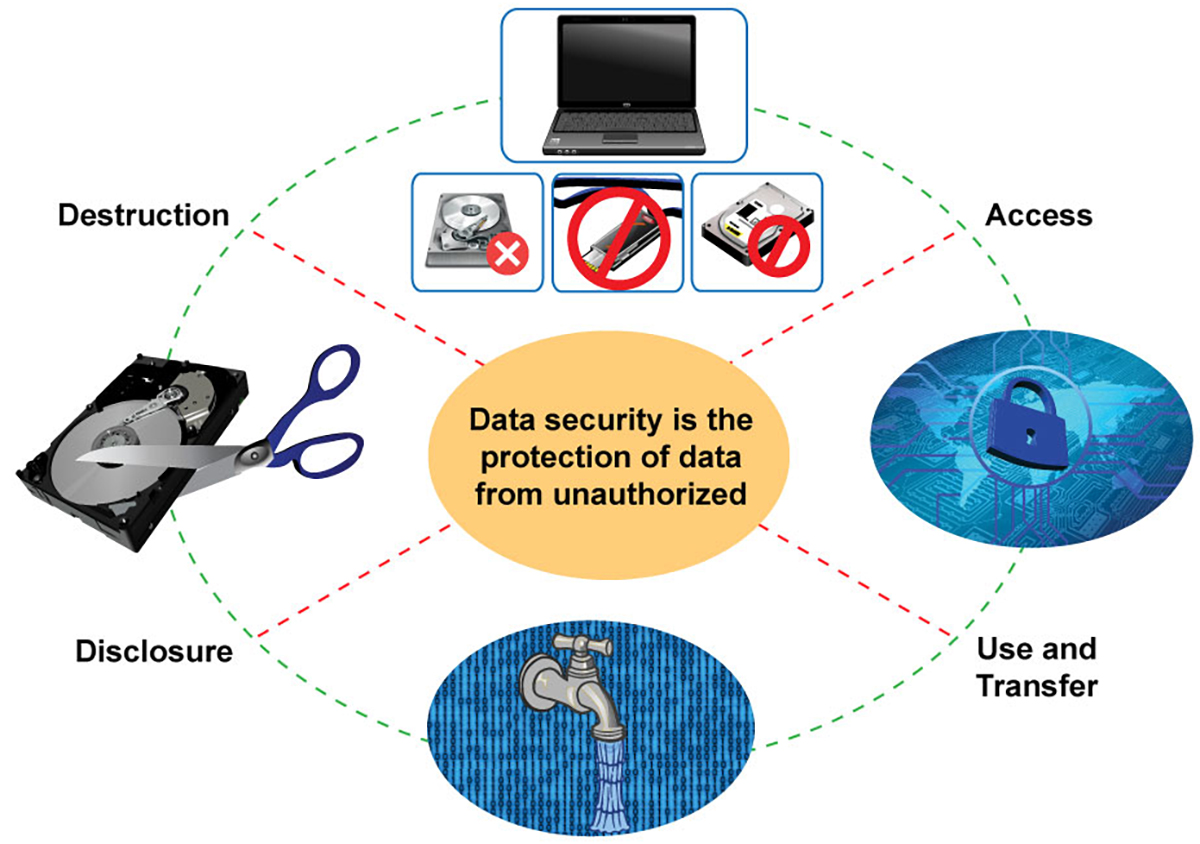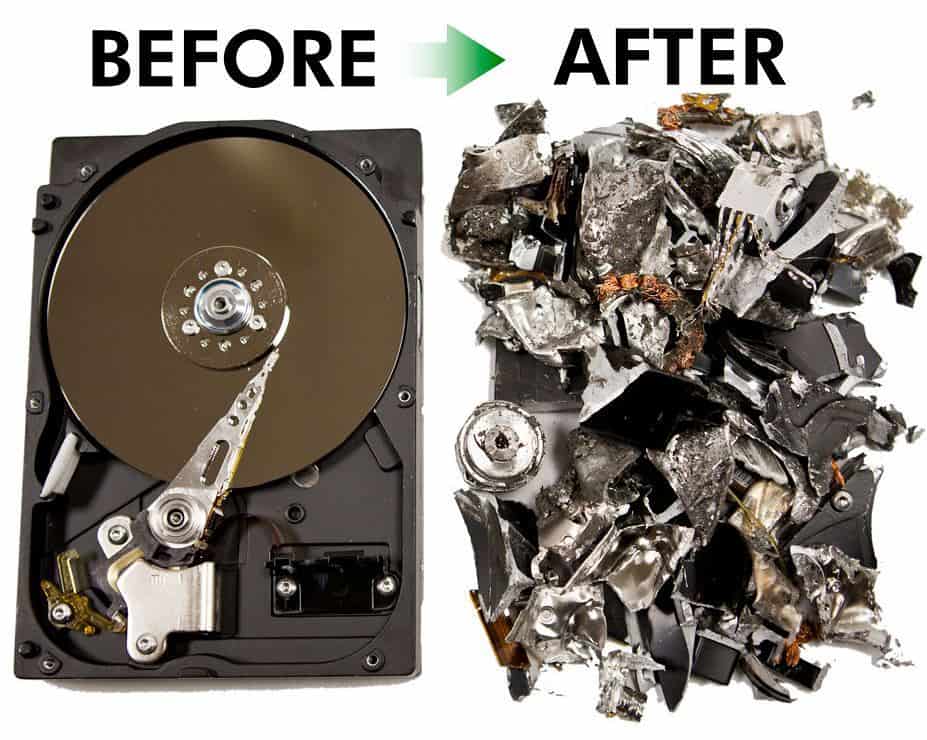Crucial Cyber Security Practices for Effective Data Destruction Approaches
Crucial Cyber Security Practices for Effective Data Destruction Approaches
Blog Article
The Importance of Effective Information Destruction Practices in Shielding Sensitive Details and Ensuring Computer System Protection
In an era where data breaches are progressively common, the value of efficient data destruction methods can not be overemphasized. Organizations face substantial risks when delicate info is inadequately taken care of, possibly bring about unauthorized access and serious monetary repercussions. Implementing durable information damage methods not just mitigates these risks however also aligns with legal conformity demands, making sure that organizations copyright their track record and foster client count on. Nonetheless, the concern continues to be: what certain strategies can be used to improve these methods, and how can companies efficiently incorporate them into their total cybersecurity framework?
Understanding Data Destruction
Comprehending data damage is critical in today's electronic landscape, where delicate details can conveniently be endangered. Effective data damage includes not simply making certain yet removing documents that information is irretrievable with thorough approaches. This procedure is necessary for companies that manage private client information, intellectual building, or inner papers, as any type of breach can lead to extreme monetary and reputational consequences.
Data devastation incorporates different techniques, including shredding physical media, degaussing magnetic storage space devices, and using software-based remedies that overwrite data multiple times. Each technique offers a particular function and must line up with the level of sensitivity of the details being gotten rid of. As an example, physical destruction is usually liked for hard drives having extremely confidential information, while software application approaches may suffice for much less sensitive info.
In addition, adhering to market standards and policies, such as the General Data Protection Guideline (GDPR) or the Health And Wellness Insurance Policy Portability and Accountability Act (HIPAA), is important for conformity and to mitigate legal dangers. Organizations has to establish a robust information devastation policy, train workers on finest techniques, and on a regular basis audit their treatments to make sure that all delicate details is taken care of safely and successfully.
Threats of Inadequate Practices
Inadequate data destruction practices reveal organizations to considerable threats that can have far-ranging effects. When delicate details is not effectively taken care of, it stays susceptible to unauthorized gain access to, which can result in data breaches and identity burglary. Such incidents not only compromise the safety and security of individuals but additionally stain the company's track record, causing a loss of client count on and potential financial repercussions.
In addition, governing conformity is progressively rigid in lots of markets. Failure to abide by information devastation guidelines can cause significant penalties and lawful activities against companies. These charges can strain financial sources and divert attention from core business procedures.
On top of that, the misuse of recurring information can lead to copyright burglary or corporate reconnaissance, threatening affordable advantages (data destruction). The effect of inadequate information destruction expands beyond prompt monetary losses; it can also lead to long-term damages to brand name stability and market position

Organizations need to identify that data safety is not only regarding protecting against breaches; it additionally encompasses the responsible administration of data throughout its lifecycle. Ignoring effective data damage methods can have devastating ramifications, highlighting the need for robust procedures to minimize these risks.
Best Practices for Information Devastation
Implementing effective data damage techniques is vital for guarding delicate information and maintaining conformity with regulatory standards. Organizations ought to embrace a multi-faceted technique to ensure that data is irretrievable, thus protecting against unauthorized accessibility and potential breaches.
First, data must be categorized based on level of sensitivity, permitting organizations to apply proper devastation methods customized to the level of danger. For digital information, making use of software-based data-wiping tools that abide by market standards can successfully overwrite existing data. Physical destruction techniques, such as shredding or degaussing, are vital for gadgets that keep sensitive information, ensuring total obliteration.
Developing a clear data retention plan is essential, outlining the length of time different kinds of information should be preserved prior to destruction. Normal audits of information storage systems are additionally needed to identify unnecessary or obsolete data requiring elimination.
Additionally, training staff members on the relevance of data devastation and the certain procedures to adhere to fosters a culture of security within the company. Preserving documentation of information destruction refines offers liability and supports conformity with external policies and inner policies. By adhering to these finest techniques, organizations can dramatically reduce the dangers associated with data exposure.
Legal and Conformity Factors To Consider

Failing to adhere to these laws can cause extreme fines, consisting of considerable penalties and reputational damages. Organizations must implement a robust information devastation plan that lines up with these legal structures and provides clear standards on the correct approaches of data disposal, whether physical shredding or digital cleaning.
In addition, keeping paperwork of data devastation tasks is necessary for demonstrating compliance throughout audits or assessments. By prioritizing legal and conformity factors to consider, organizations can enhance their data safety and security posture and foster trust fund with stakeholders and clients, inevitably adding to a much more secure information administration atmosphere.
Advantages of Effective Data Destruction
Reliable data devastation methods extend past mere conformity; they provide substantial advantages to companies that prioritize them. By guaranteeing that delicate details is irretrievably destroyed, companies reduce the threat of data violations and the potential financial effects related to them. This aggressive approach not only safeguards against unapproved access yet also improves the total dependability of the organization in the eyes of stakeholders and customers.
Executing durable information destruction techniques, such as physical damage of storage space devices or innovative data wiping methods, adds to the strengthening of an organization's cybersecurity pose. data destruction. It lowers the likelihood of copyright burglary and protects proprietary information, thus preserving an one-upmanship in the market

Final Thought
In final thought, efficient data destruction techniques are important for safeguarding delicate details and boosting total computer system safety and security. Ultimately, a dedication to durable data devastation approaches cultivates a culture of responsibility, therefore reinforcing a company's cybersecurity pose and maintaining customer trust fund.

Report this page